Land Invertebrates
Media
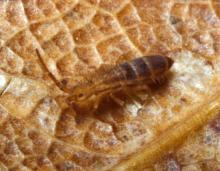
Species Types
Scientific Name
More than 8,000 species globally
Description
Springtails, like insects, have six legs, but these tiny rounded, oval, or elongated creatures that hop quickly into the air are not insects. They have a separate lineage and many structural differences.
Media
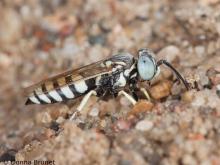
Species Types
Scientific Name
More than 1,200 species in North America north of Mexico
Description
Many species and genera of sand wasps occur in Missouri. They nest in the ground during summer. They are found in many habitats but most often in open, sandy areas along rivers.
Media

Species Types
Scientific Name
Species in the suborder Zygoptera
Description
Like dragonflies, damselflies have long bodies, two pairs of long, membranous, finely veined wings, and predaceous aquatic larvae that have extendible mouthparts. Damselflies typically hold their wings together, above the body.
Media
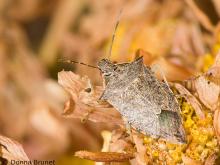
Species Types
Scientific Name
In North America, more than 200 species in 64 genera
Description
Stink bugs are shield-shaped insects that can smell really bad. This is a large family of true bugs known for producing a foul odor when harassed.
Media
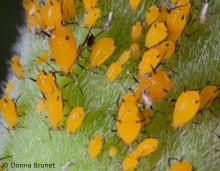
Species Types
Scientific Name
More than 1,300 species in North America north of Mexico
Description
Aphids are common, small, soft-bodied insects that suck plant juices. To see them well, you probably need a hand lens, but the damage they do to plants can be all too obvious!
Media
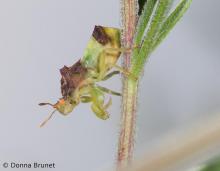
Species Types
Scientific Name
Phymata spp. and others in subfamily Phymatinae (ambush bugs)
Description
Ambush bugs are a subfamily of assassin bugs. They’re chunky, small insects with powerful grasping forelegs. They hide motionless in flowers waiting for prey to venture near.
Media

Species Types
Scientific Name
Syrbula admirabilis
Description
Although they both have slanted faces, male and female admirable grasshoppers look quite different: The females are large and marked with bright green and tan, and the males are smaller and wear brown, black, and tan hues.
Media
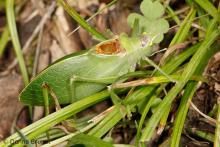
Species Types
Scientific Name
Pterophylla camellifolia
Description
The common true katydid is a master mimic. Its bright green color matches surrounding leaves, and its wings are veined like leaves as well.
Media

Species Types
Scientific Name
Cotinis nitida
Description
The green June beetle is a common type of scarab beetle in Missouri. These large, metallic green beetles buzz loudly when they fly. They are attracted to ripe and rotting fruit and compost piles.
Media

Species Types
Scientific Name
Agrilus planipennis
Description
The emerald ash borer is a highly destructive, invasive beetle that kills every type of ash tree — even healthy, vigorous ones.
See Also



Media

Species Types
Scientific Name
Cisseps fulvicollis
Description
The yellow-collared scape moth is more often “orange-collared.” And whether you think it looks more like a firefly or a wasp, it’s still a moth!
Media

Species Types
Scientific Name
Nearly 150 species in North America north of Mexico
Description
Slim, delicate plume moths are instantly recognizable by their T-shaped silhouette, long legs, and muted shades of tan and brown. It can be hard to separate the various species.
Media

Species Types
Scientific Name
Pyrrharctia isabella
Description
Not many people know the adult Isabella tiger moth when they see one, but we’re all acquainted with its caterpillar, the woolly worm, or woolly bear.
About Land Invertebrates in Missouri
Invertebrates are animals without backbones, including earthworms, slugs, snails, and arthropods. Arthropods—invertebrates with “jointed legs” — are a group of invertebrates that includes crayfish, shrimp, millipedes, centipedes, mites, spiders, and insects. There may be as many as 10 million species of insects alive on earth today, and they probably constitute more than 90 percent all animal species.





















